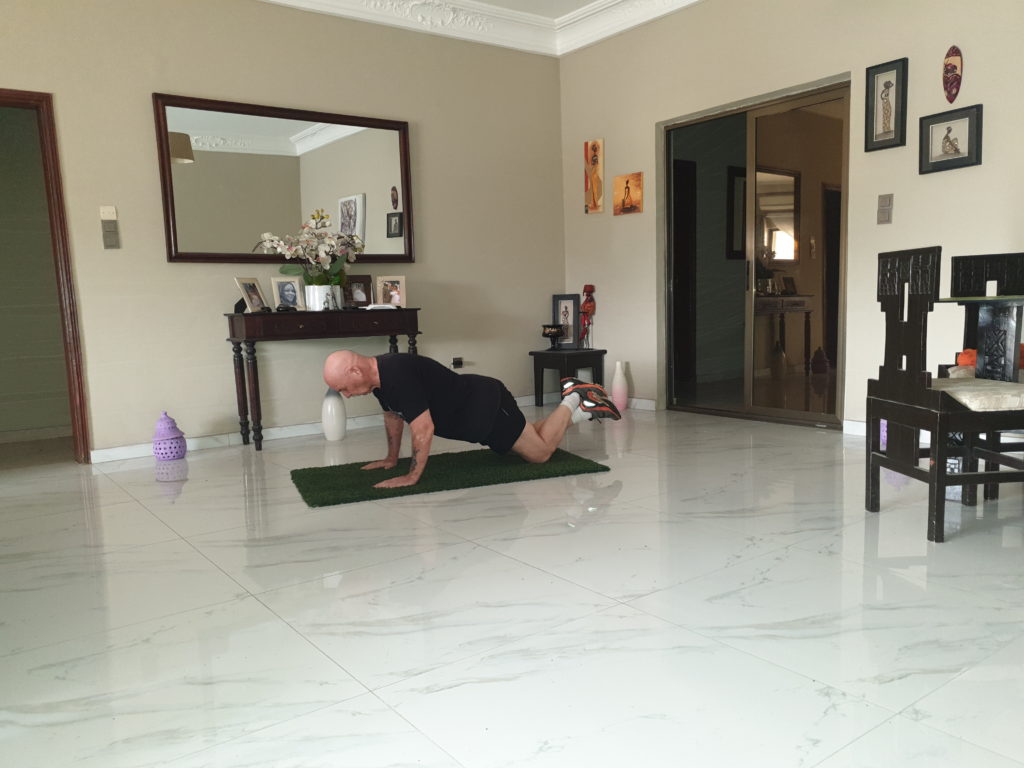
Kneeling Push-ups
The Kneeling Push-Up. Maybe you’ve heard them called “girl push-ups” or “modified push-ups.” Regardless of their title, knee push-ups often get a bad rap — they’re too easy, they’re “cheating,” they’re hard on your kneecaps. But science begs to differ. Knee push-ups are a legit upper-body exercise. They’re the perfect intro to standard push-ups or other difficult arm or shoulder workouts. Find out how to perfect your form and maximize the benefits of this simple at-home move.
What are the Benefits of Knee Push-Ups?
The Kneeling Push-Up. For one thing, they’re easier! By starting on your knees, you can work on your form and stability before advancing to full push-ups.
A small 2011 study of 28 athletic males who did both traditional and modified push-ups suggested that knee push-ups are “an effective alternative” for those who can’t do a traditional push-up yet. It also indicated that knee push-ups might be more beneficial for folks recovering from upper back or shoulder issues.
Recent research indicates knee push-ups and traditional push-ups activate the same upper-body muscles: chest, shoulders, arms, and abs. The only real difference is that you’re reducing your load. It’s like the difference between doing a squat with just your body weight and doing a squat while holding dumbbells. Once you get comfortable with 16 knee push-ups in a row, it’s time to try a few push-ups on your toes.
Knee Protection Tips
After incline push-ups, getting lower onto your knees will feel very different. Besides, the kneeling push-up needs a little prep before your workout. In this case, it can help you prevent feeling weak in the knees after your push-ups.
- Always do push-ups on a mat or carpet instead of a bare floor.
- Kneel on a folded towel or a throw pillow to cushion your knees during your push-ups.
- Place your hands flat on the floor, with fingers slightly spread, so your front half can handle half the weight. You shouldn’t rely solely on your knees for support.
- Check your form often. You want to evenly distribute your weight across your torso to avoid knee or wrist injury.
If your knees still feel painful after following these precautions, you might need to take a break from knee push-ups. Chat with your doctor or physical therapist about strengthening exercises or stretches for the muscles around your knees.
In Conclusion
Kneeling push-ups are an effective way to build up to the full push-up. Cushioning of the knees is recommended to protect them, many of us older adults need that, as our knees need a little TLC, the older we get. So then, when you can do around 15 or 16 knee push-ups you can then try the full push-up. But I will cover that later.
Important Note *
Remember that everyone is different, and it is ultimately YOUR RESPONSIBILITY to find what your body responds to. So please do your due diligence before trying anything new, including getting Medical Advice to ensure your safety and peace of mind.
Connect with me and leave a comment or two on my social media.